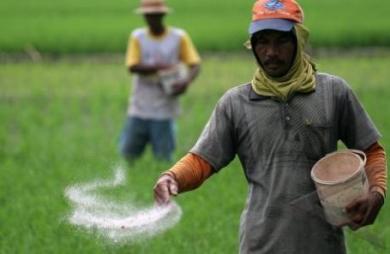Fertilizing Plants
Background and usability

Fertilization is the act provide additional nutrients to the soil complex, either directly or indirectly can donate food to the plant material. The goal is to improve the fertility of the soil so that plants get enough nutrients to improve the quality and quantity of plant growth.
Plants needs to be given fertilizer, if:
- Nutrient-poor soil
- Stunted plant growth, despite being weeded and found symptoms of nutrient deficiencies.
- Plant growth needs to be accelerated to reduce the risk due to competition with weeds.
- Want to increase production and yields
Type of fertilizer is commonly used fertilizers containing primary nutrients (N, P, K). However, the plant may also lack other nutrients. Therefore, there are three ways to determine plant nutrient deficiencies (deficiency) :
- Observing the symptoms that arise in the growth of plants, whether normal or not.
- Analysis of the soil in the laboratory by taking soil samples in the field
- Analysis of plant tissue in the laboratory by taking samples of plant leaves.
Fertilization is done before or early in the rainy season. If required additional fertilizers in the same year, it conducted towards the end of the rainy season. Before fertilization, soil pH should be known. If the pH of acidic soils, it is necessary given kaptan limestone (CaCO3) so that the pH of soil fertilization gives rise to good plant growth response.
At 1-3 months old plants generally performed fertilization. If the fertility of cultivated land getting bad, then fertilization performed early. After it was repeated at the age of 6-24 months, until the plant height, exceeded the high weeds.